從統(tǒng)計數(shù)據(jù)來看,3月下旬,,美國新增申請失業(yè)救濟人數(shù)激增,,達到690萬人。此后,,美國失業(yè)人數(shù)逐漸穩(wěn)定在每周140萬人左右,。
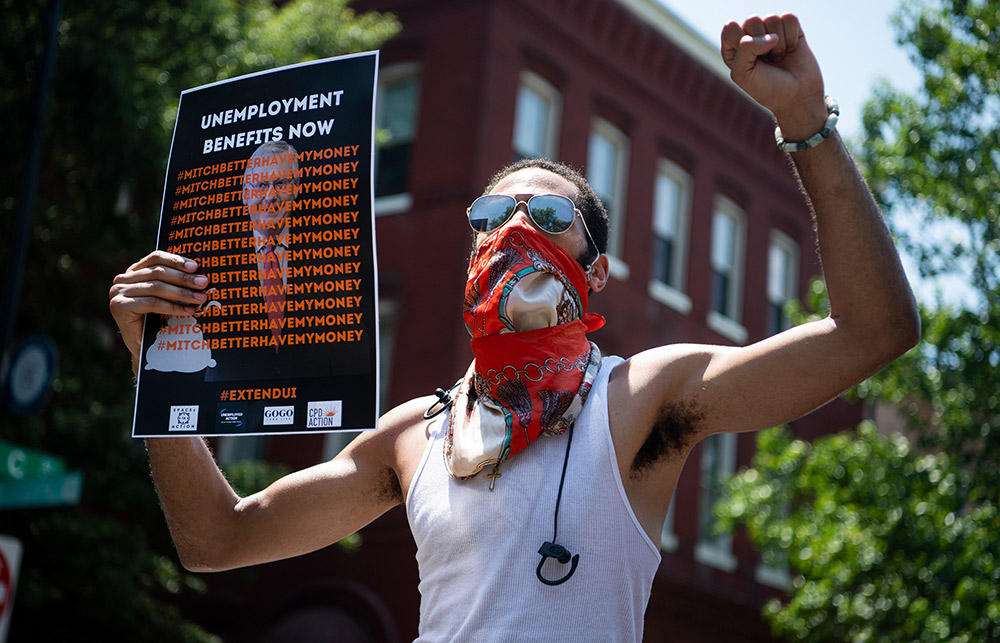
受新冠疫情影響,,美國失業(yè)率高達11.1%,已經(jīng)超過“經(jīng)濟大蕭條”時期的峰值,。雖然一些州幸免于難(蒙大拿州和懷俄明州),,但另外一些在經(jīng)濟上嚴重依賴旅游業(yè)的州卻遭受了重創(chuàng),,如內(nèi)華達州、佛羅里達州和夏威夷州,,許多人都擔心是否還有就業(yè)機會以及何時復工,。在這次疫情中,每個人經(jīng)受的痛苦并不對等,,美國黑人失業(yè)率要遠遠高于其他群體,。與此同時,一系列疫情救助措施即將到期,,經(jīng)濟學家指出,,美國經(jīng)濟正在懸崖邊徘徊。比如,,每周額外發(fā)放的600美元聯(lián)邦失業(yè)救濟金將在本月底到期(特朗普政府高級官員們正在考慮延期或更換救助方案),,以及禁止房東驅(qū)逐房客的臨時禁令將在7月25日到期,勢必將令許多美國家庭因為交不起房租而被逐出家園,。
如今,,美國人從最活躍搶手的就業(yè)市場之一陷入到如今慘談的境地,這種一落千丈的恐懼感,、憂慮感與失落感僅靠冷冰冰的數(shù)字是無法體現(xiàn)出來的,。他們排著長長的隊伍登記失業(yè),冒著生命危險尋找工作,。他們想知道如果學校在秋季仍然不開學,,那么他們是否還能夠正常工作。他們也請求立法者延長額外失業(yè)救濟補助?,F(xiàn)在,,美國人擔心自己的未來、健康與孩子,,也擔心自己的國家,。
以下是美國失業(yè)的情況。
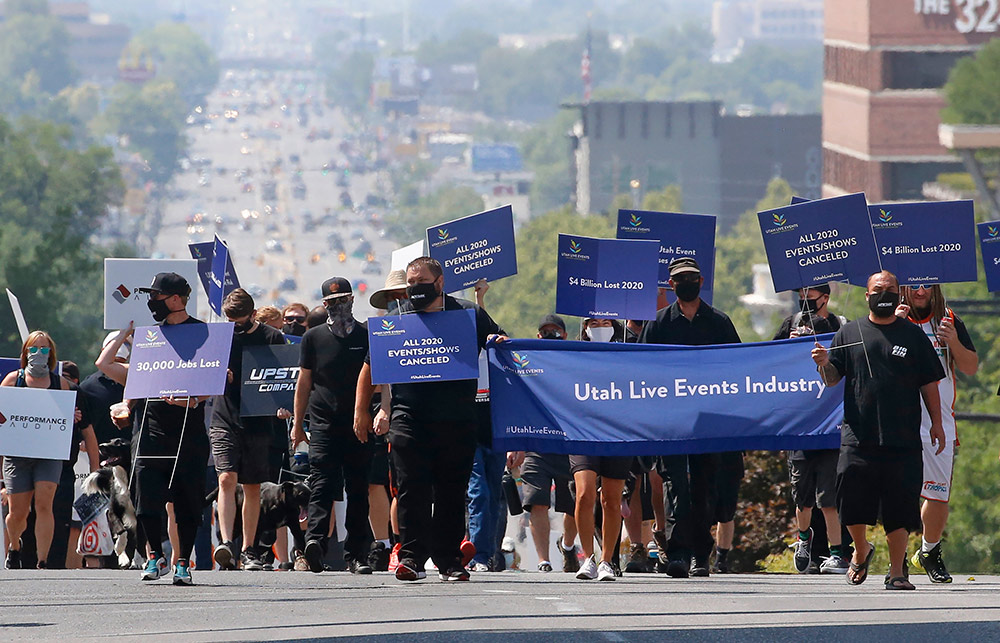


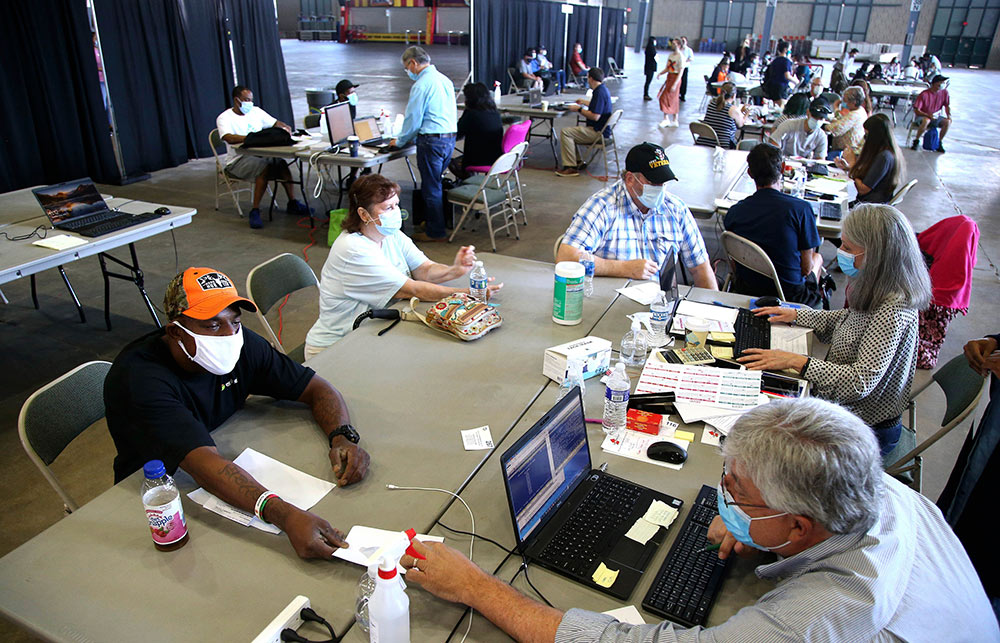
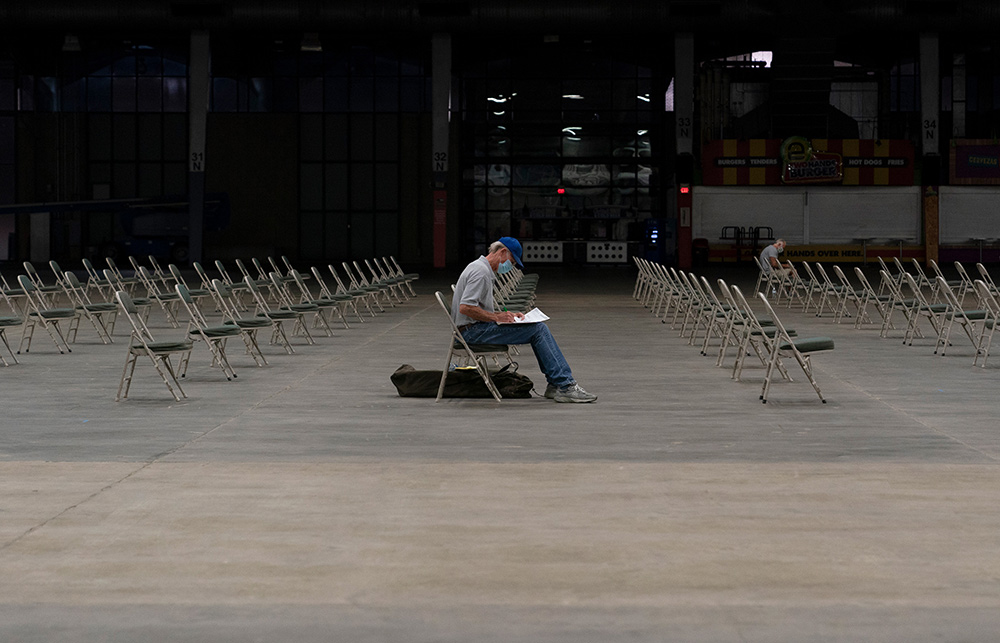
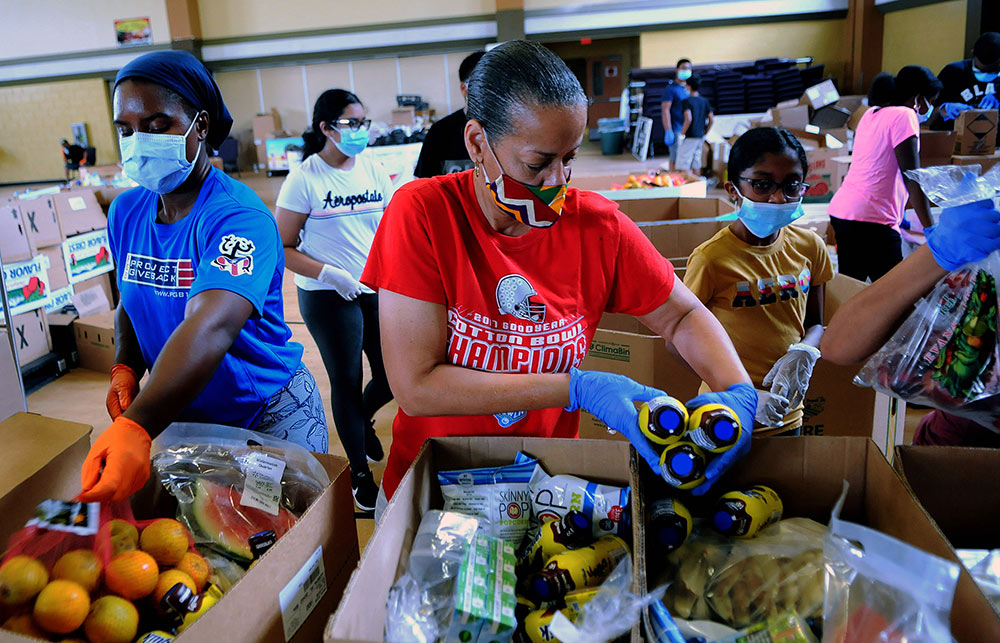
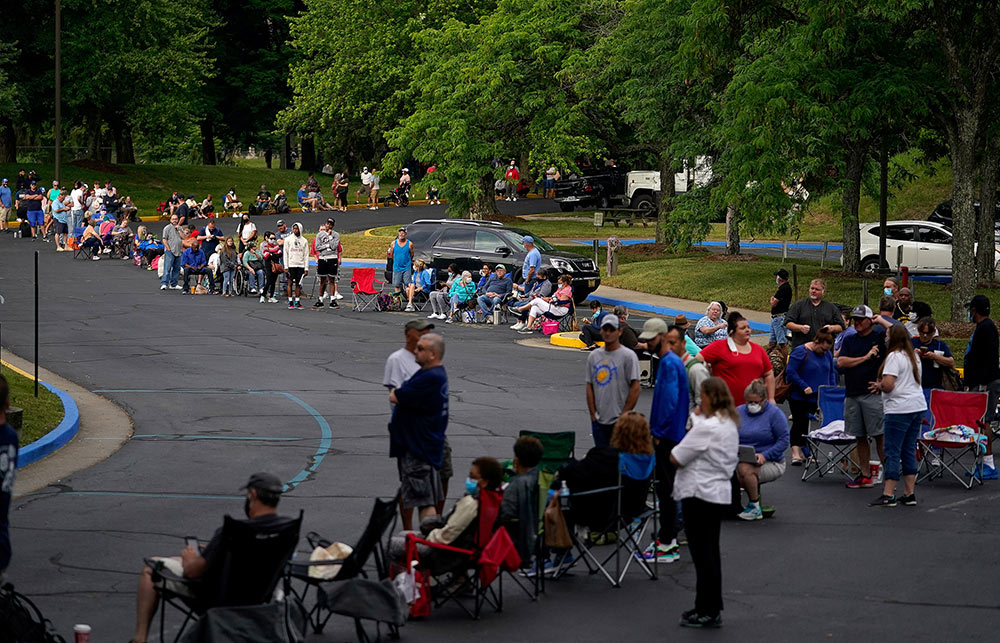
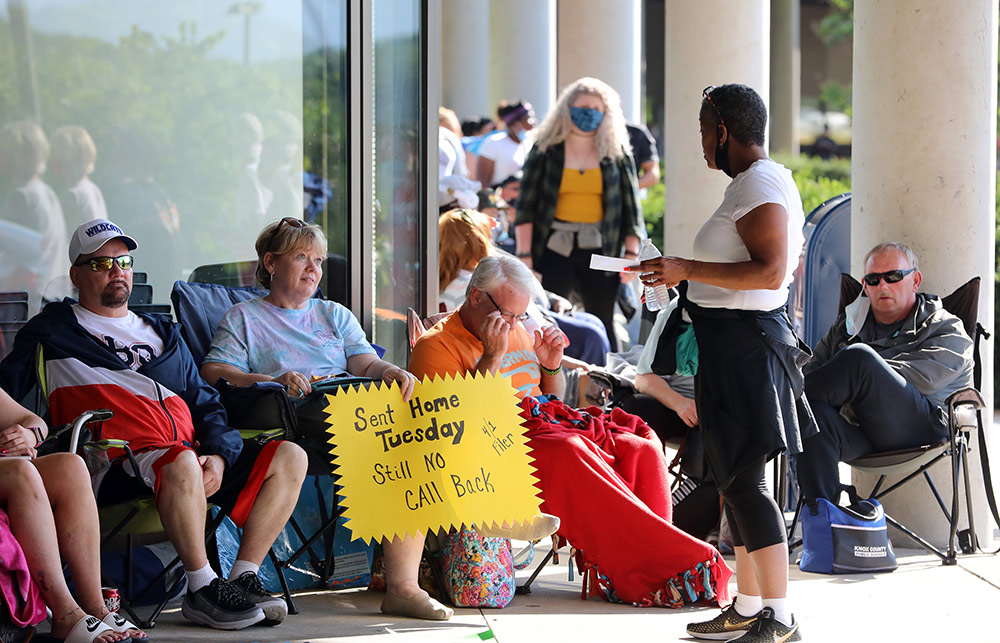
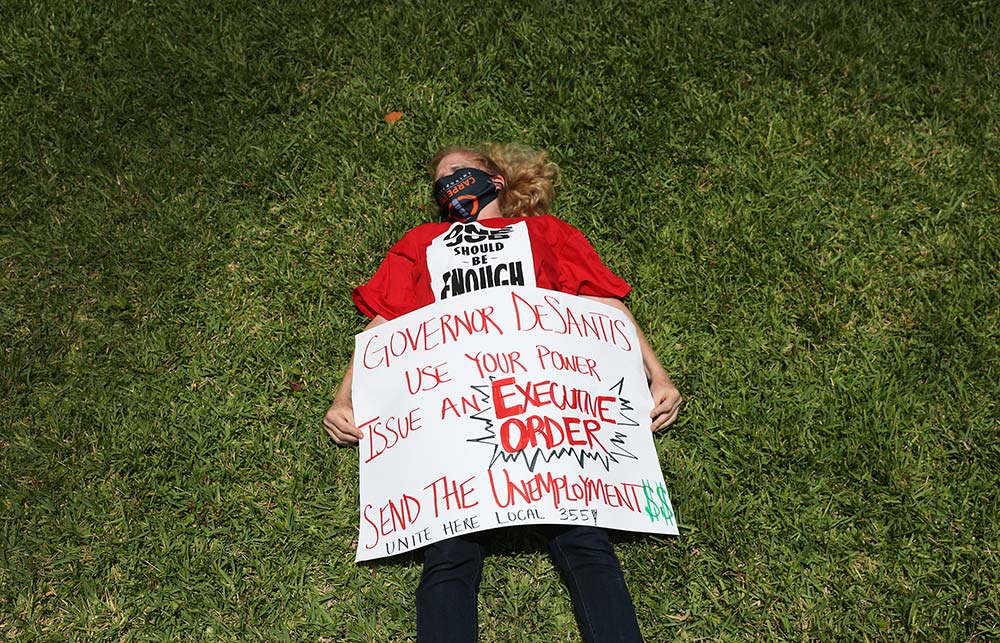
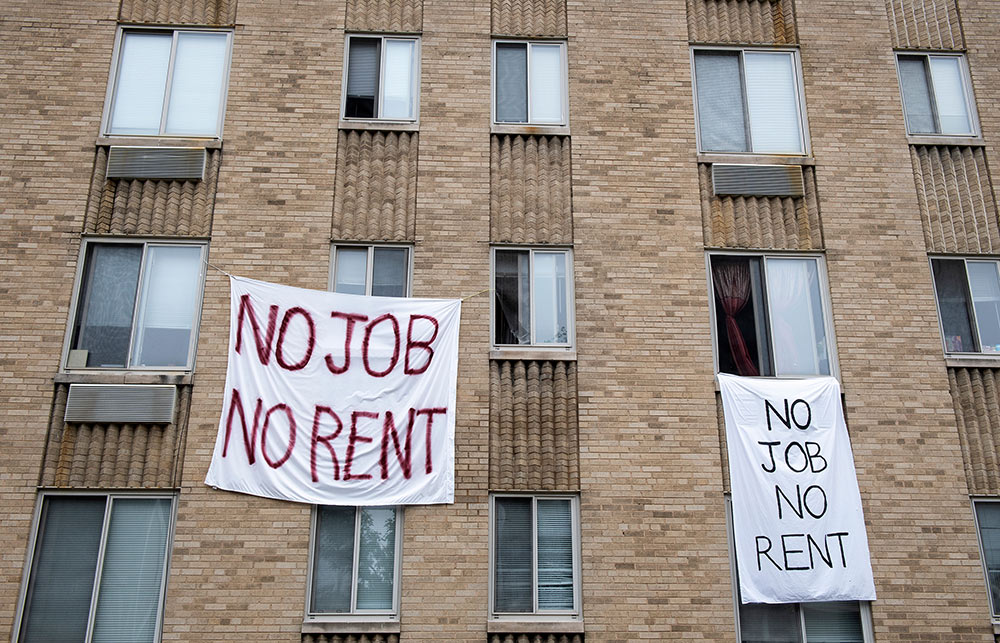
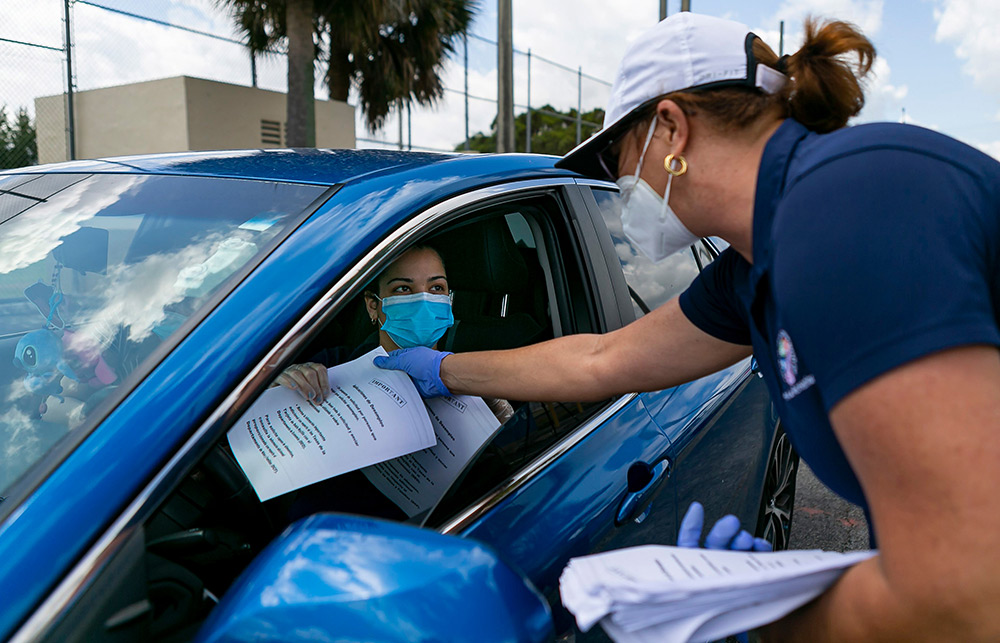
(財富中文網(wǎng))
文字內(nèi)容:Lee Clifford,。圖片編輯:Alex Scimecca,。Lance Lambert對此文亦有貢獻。
編譯:于佳鑫
從統(tǒng)計數(shù)據(jù)來看,,3月下旬,,美國新增申請失業(yè)救濟人數(shù)激增,達到690萬人,。此后,,美國失業(yè)人數(shù)逐漸穩(wěn)定在每周140萬人左右。
受新冠疫情影響,,美國失業(yè)率高達11.1%,,已經(jīng)超過“經(jīng)濟大蕭條”時期的峰值。雖然一些州幸免于難(蒙大拿州和懷俄明州),,但另外一些在經(jīng)濟上嚴重依賴旅游業(yè)的州卻遭受了重創(chuàng),,如內(nèi)華達州、佛羅里達州和夏威夷州,,許多人都擔心是否還有就業(yè)機會以及何時復工,。在這次疫情中,,每個人經(jīng)受的痛苦并不對等,美國黑人失業(yè)率要遠遠高于其他群體,。與此同時,一系列疫情救助措施即將到期,,經(jīng)濟學家指出,,美國經(jīng)濟正在懸崖邊徘徊。比如,,每周額外發(fā)放的600美元聯(lián)邦失業(yè)救濟金將在本月底到期(特朗普政府高級官員們正在考慮延期或更換救助方案),,以及禁止房東驅(qū)逐房客的臨時禁令將在7月25日到期,勢必將令許多美國家庭因為交不起房租而被逐出家園,。
如今,,美國人從最活躍搶手的就業(yè)市場之一陷入到如今慘談的境地,這種一落千丈的恐懼感,、憂慮感與失落感僅靠冷冰冰的數(shù)字是無法體現(xiàn)出來的,。他們排著長長的隊伍登記失業(yè),冒著生命危險尋找工作,。他們想知道如果學校在秋季仍然不開學,,那么他們是否還能夠正常工作。他們也請求立法者延長額外失業(yè)救濟補助?,F(xiàn)在,,美國人擔心自己的未來、健康與孩子,,也擔心自己的國家,。
以下是美國失業(yè)的情況。
7月21日,,在鹽湖城,,因為新冠疫情而被迫失業(yè)的工人。
7月16日,,在佛羅里達州邁阿密斯普林斯,,抗議者要求參議員支持延長失業(yè)救濟金計劃。
2020年7月15日,,在奧馬哈的一場招聘會上,,賈馬爾?阿達梅(右)正在分發(fā)有著空缺職位信息的口袋。內(nèi)布拉斯加州恢復了大多數(shù)申請失業(yè)救濟民眾的求職要求,。
7月15日,,在塔爾薩世博廣場,俄克拉何馬州就業(yè)保障委員會的吉姆?波利(右下)正在幫助米卡?巴內(nèi)特(左),,后者在失業(yè)前是一名廚師,。
7月15日,,在塔爾薩的一場招聘會上,一名男子一邊填寫文書,,一邊等待著來電,。
7月6日,志愿者在命運之城教堂為佛羅里達州中部第二豐收食品銀行準備食物,。奧蘭多地區(qū)對食物一直存在旺盛需求,,因為大量從事服務(wù)業(yè)的工作者和其他工人都因為新冠疫情而失業(yè)。
6月18日,,為領(lǐng)取失業(yè)救濟金,,人們在法蘭克福的肯塔基就業(yè)中心外排隊等候。
6月19日,,數(shù)百名失業(yè)的肯塔基州居民為領(lǐng)取失業(yè)救濟金,,在法蘭克福的肯塔基就業(yè)中心外排著長隊等待。
蓋爾?諾曼參加了5月22日在邁阿密海灘舉行的抗議活動,,要求佛羅里達州恢復失業(yè)救濟補助,。
5月18日,華盛頓特區(qū)子午線大樓上懸掛著標語,。
4月7日,,塔蒂阿娜?費爾南德斯在佛羅里達州希亞利亞向邁阿密戴德縣居民分發(fā)失業(yè)文件。
文字內(nèi)容:Lee Clifford,。圖片編輯:Alex Scimecca,。Lance Lambert對此文亦有貢獻。
(財富中文網(wǎng))
編譯:于佳鑫
The numbers tell one story. Following an almost unimaginable spike to 6.9 million new unemployment claims in late March, the number of unemployed Americans has gradually settled to around 1.4 million new claims per week.
Prior to the pandemic, claims had never been above 700,000. But that still puts the unemployment rate at 11.1%—higher than the Great Recession peak. While some states have been spared the worst (Montana and Wyoming), others that depend heavily on tourism (Nevada, Florida, and Hawaii) have sustained brutal economic trauma that have many wondering when—and if—the jobs will ever come back. We know already that the pain has not been spread evenly, with Black Americans seeing a much higher spike in unemployment than other groups. Meanwhile with the extra $600 in weekly federal unemployment benefits scheduled to expire (Congress is weighing options for an extension or replacement), and the federal moratorium on evictions ending July 25, many economists fear American families are about to fall off a financial cliff.
And that’s a story the numbers don’t tell. The worry, and fear, and hope, and sense of loss facing those Americans who plunged from one of the tightest job markets in history, into one of the most bleak. They’re braving long lines to register for unemployment. Navigating slow and faulty state systems. Risking their own health to look for work. Wondering whether they’ll be able to work at all if schools don’t reopen in the fall. Joining protests to implore legislators to extend extra federal benefits. They are worried about their future, they’re worried about their health, they’re worried about their kids, and they’re worried about their country.
Here’s what that looks like, as the pandemic of unemployment spreads across the country.
Special events workers who were forced out of their jobs because of the COVID-19 pandemic march in Salt Lake City on July 21.
Protesters ask senators to support the continuation of unemployment benefits on July 16 in Miami Springs, Fla.
Jmal Adame (at right) hands out information packets on open positions at a drive-thru job fair in Omaha on July 15, 2020. Nebraska reinstated a job-search requirement for most people claiming unemployment benefits.
Micah Barnett (left), a former cook left jobless in the wake of the COVID-19 pandemic, is helped by Jim Polly (bottom right) from the Oklahoma Employment Security Commission at Expo Square in Tulsa, on July 15.
A man fills out paperwork while waiting for his number to be called at a job fair in Tulsa on July 15.
Volunteers prepare boxes of food for the Second Harvest Food Bank of Central Florida at City of Destiny church on July 6. The demand for food persists in the Orlando area, owing to the large numbers of service workers and others who have lost their jobs as a result of the pandemic.
People line up outside the Kentucky Career Center in Frankfort prior to its opening to get assistance with their unemployment claims on June 18.
Hundreds of unemployed Kentucky residents wait in long lines outside the Kentucky Career Center in Frankfort on June 19 for help with their unemployment claims.
Gail Norman participates in a die-in protest on May 22 in Miami Beach, asking the State of Florida to fix its unemployment benefits system.
Signs hang from the Meridian Heights apartment building in Washington, D.C., on May 18, 2020.
Tatiana Fernández distributes unemployment documents to residents of Miami-Dade County in Hialeah, Fla., on April 7.
Text by Lee Clifford. Photo editor: Alex Scimecca. Additional reporting by Lance Lambert.






